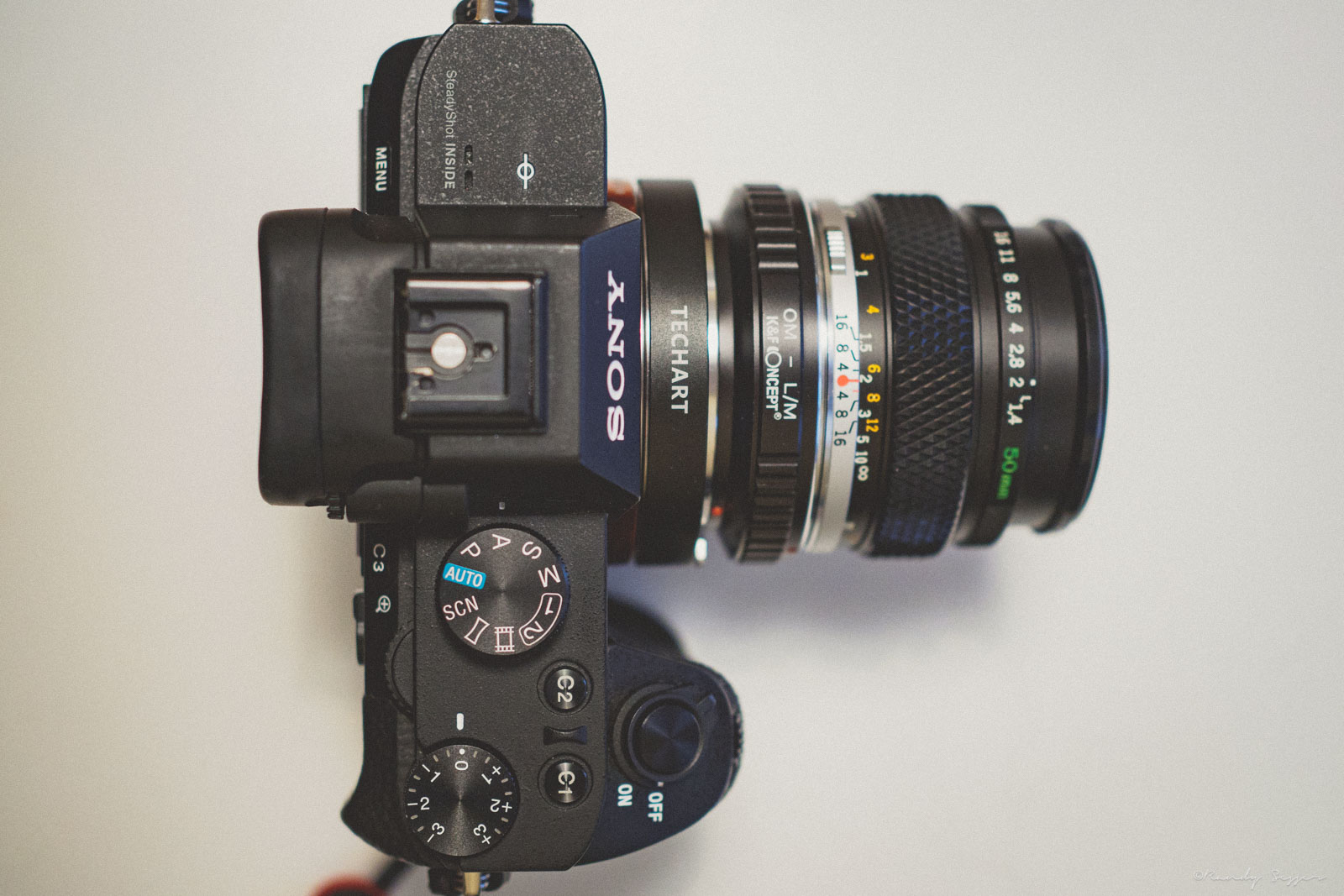[Review] Techart PRO LM-EA7 - Autofocus Anything
In a previous post, I went on about how I was unsatisfied with my old Olympus OM manual focus lenses on a crop sensor and how it bothered me that 50mm != 50mm. I ended up buying a full-frame camera in the form of a Sony Alpha A7II to fulfill my desires. Using the EVF (electronic view finder) on a mirrorless camera is inherently easier when it comes to using manual focus. Focus aids like focus peaking and focus zoom make it relatively trivial to get critically sharp images for semi-static subjects. If, however, you’re trying to capture images of your two year old child as they learn to walk (and fall down), using manual focus lenses might leave you less than impressed and certainly with a lot of out of focus images.

Techart PRO with Olympus OM to Leica M mount + Olympus OM 50mm f/1.4
Enter the Techart PRO LM-EA7; the adapter that breaths new life into your old timey lenses. It’s designed to work with Leica M mount lenses, but you can also use other mounts by purchasing additional adapters (as seen in the image above). It essentially adds a motor to your lenses that moves the entire lens further/closer from/to the image sensor until the image is in focus. It’s fairly brilliant and, honestly, I’m surprised it’s taken this long to develop something like this. I realize that it relies on on-chip phase detect sensors (a.k.a. PDAF) and that it is a fairly recent addition to some mirrorless cameras (Sony A7/r/s II, A6300/6500, Olympus OM-D E-M1/E-M1 Mk II), but it seems like this could have been added to DSLRs with PDAF as well. Maybe I’m being naive, but there does exist some adapters that provide focus confirmation on DSLRs, why not take it a step further and and build a motor?
I digress…
How it works
As I said, the lens works by physically changing the distance of the lens elements to the camera sensor. The on-chip phase detection sensors then tell the camera when something is in focus and provides feedback to the adapter. The adapter also tells the camera the focal length of the lens attached which sets the appropriate “Steady Shot” (or IBIS - In Body Image Stabilization) setting. That said, you do have to tell the adapter which lens (or rather, what focal length) is mounted for the IBIS to be correct. This also adds the focal length to the EFIX data in any images.
Setting Desired Focal Length
- Attach lens to adapter, adapter to camera
- Turn camera on
- Change the camera aperture setting to appropriate f-stop
- Take a picture (it will be grossly overexposed, that’s normal)
- Reset f-stop to 2.0
- Delete picture from step 4 (optional)
ƒ-stop to Focal Length Chart
| F-stop | Focal Length |
|---|---|
| ƒ/11 | 15mm |
| ƒ/13 | 18mm |
| ƒ/14 | 21mm |
| ƒ/16 | 24mm |
| ƒ/18 | 25mm |
| ƒ/20 | 28mm |
| ƒ/22 | 35mm |
| ƒ/25 | 50mm |
| ƒ/29 | 90mm |
| ƒ/32 | 135mm |
Note that these are the factory default settings. Techart makes an Android app that apparently allows one to change these values. Unfortunately, they don’t have an iPhone equivalent and I don’t have an Android to test this functionality.
Shooting Tips
- Always shoot with the camera set to ƒ/2.0.
- For general use, set lens to infinity (or slightly before depending on lens/adapter)
- Get decent closeup shots by focusing the lens to it’s closest focusing distance and let the adapter do the rest. You can get closer with the Techart than you can with traditional adapters
- Make sure Phase Detect. Area is On
- Turn AEL w/ shutter off (not required, but useful when stopped down)
If you don’t want to hassle with the chart above, you can change “SteadyShot Settings” -> “SteadShot Adjust” to Manual and set the focal length manually when you change the lens. I find this a lot easier than the method above as I have C4 programmed to bring up the “SteadyS. Focal Len.” menu. The only down side is you don’t get accurate focal length in EXIF1 data.
Thoughts
With the latest firmware installed on the adapter, focus is really quite good. It’s not as fast as native lenses but it’s faster than you could possibly muster (unless your using zone focusing). It does add a bit of bulk and weight to the camera and the adapter “hangs” below the bottom so the camera doesn’t sit flat/level when the adapter is attached1. It’s also a bit noisy when focusing. The only issues I really run into is infinity focusing for landscapes and decreased battery performance. It’s just easier to manual focus and use peaking/zoom features for infinity focus and I just carry extra batteries.
All in all, it’s a solid piece of tech and I definitely recommend it if you have some old legacy lenses laying around you wanted to use on your A7 MkII series camera. I only own one native lens for the Sony and it has been sitting in a drawer since I picked up the Techart Pro.
Highly Recommended.
This is a bit of a moot point anyway. The adapter can’t know the aperture set on the lens so you’re only getting half the information anyway. Sure, it might jog your memory a bit about which lens you used, but what if, for instance, you have multiple 50mm lenses? Furthermore, there are tools that will allow you modify EXIF once you download them to your computer. ↩︎ ↩︎